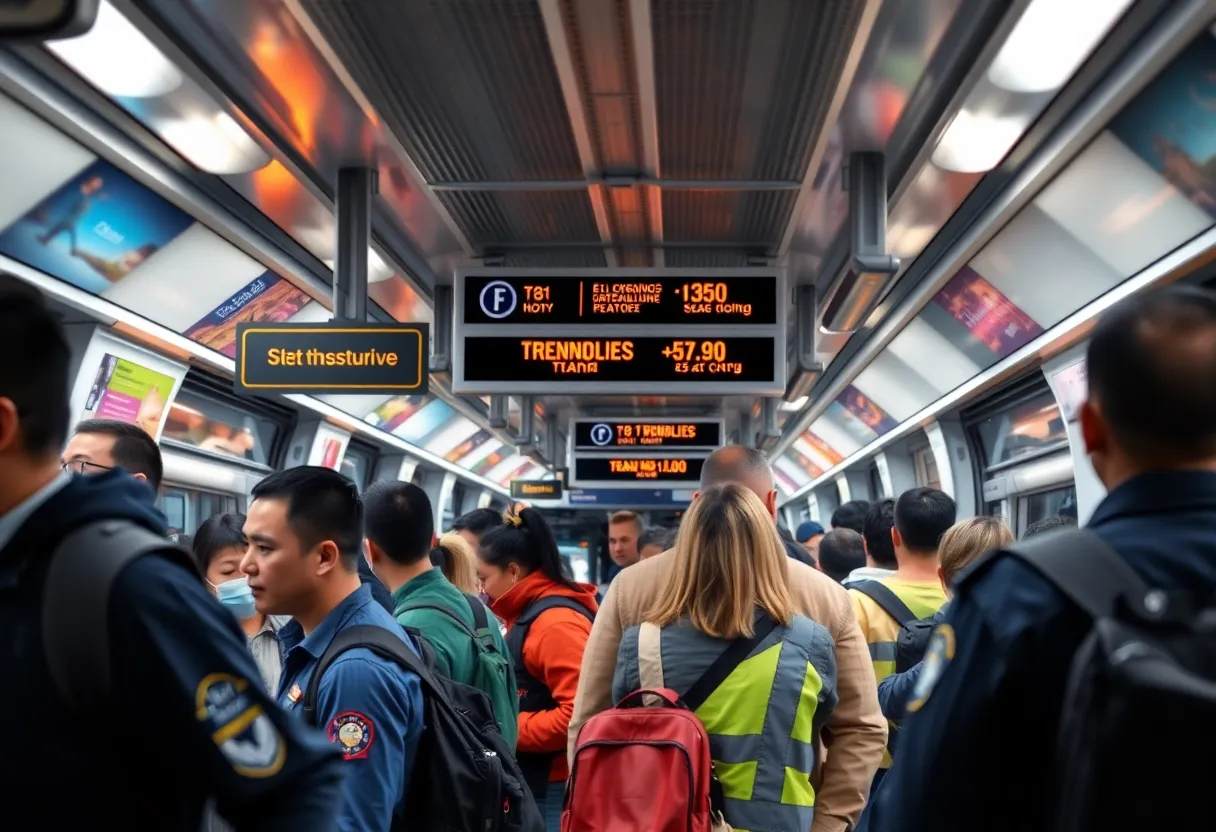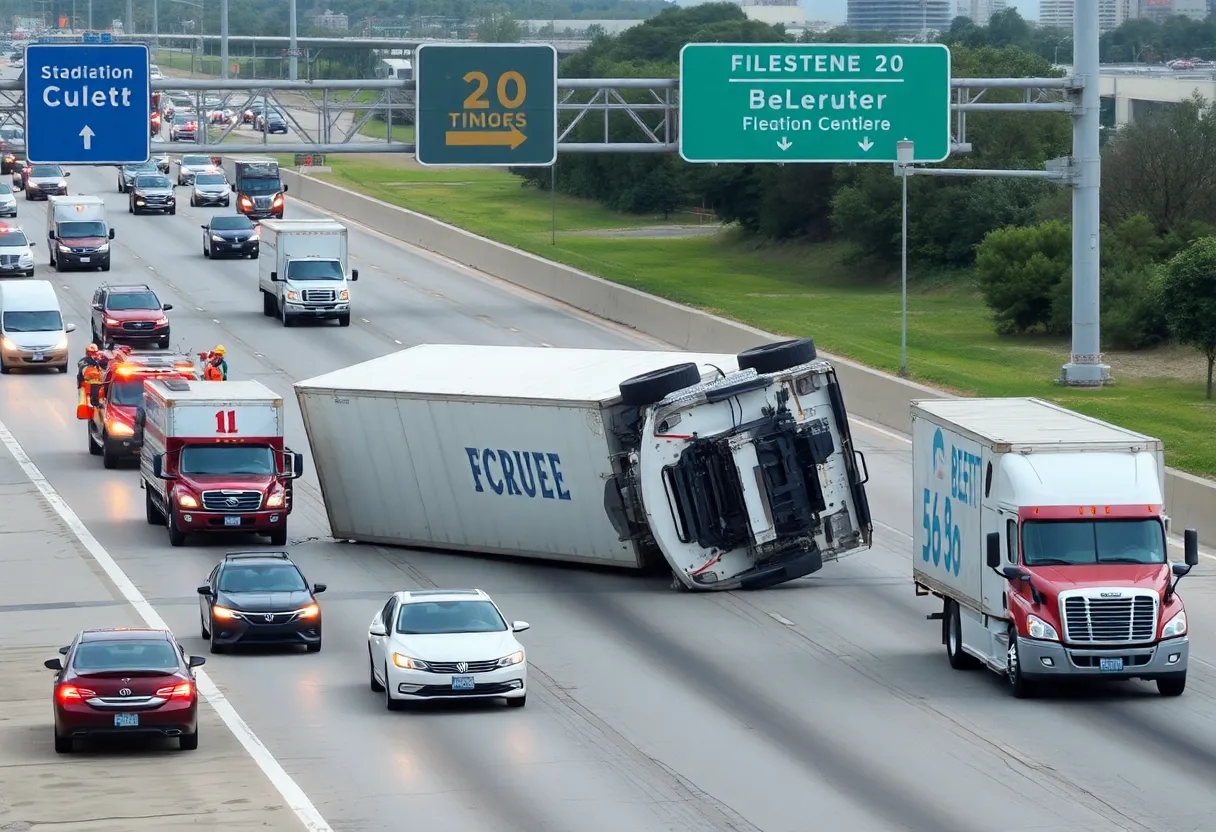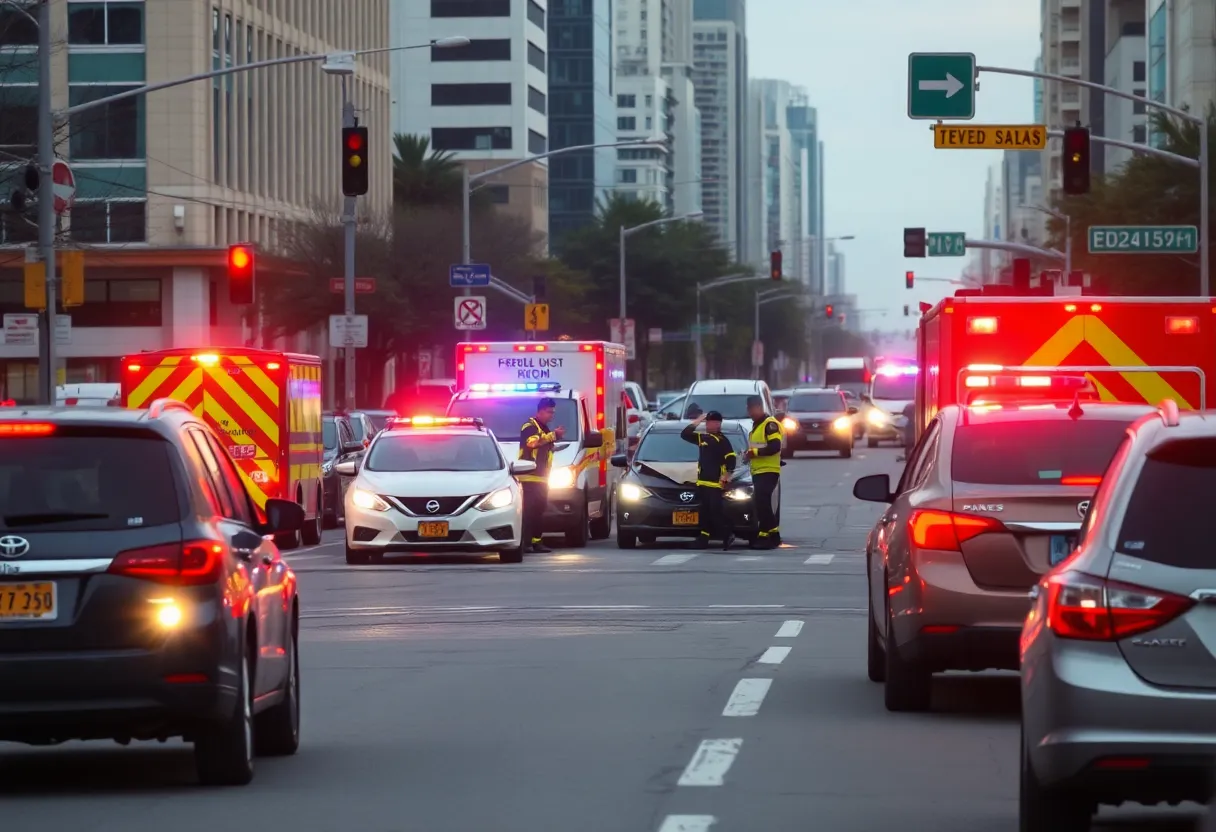Dallas, September 15, 2025
News Summary
Regional transit officials in Dallas have called for comprehensive crime statistics from transit agencies, particularly DART, to be reported in NIBRS format. This request, driven by rising crime rates and public safety concerns, aims to ensure transparency and enable better analysis of crime trends amidst a notable increase in reported incidents on the system. Local leaders are emphasizing the need for detailed crime data to address safety and governance issues related to declining ridership and public confidence in transit safety.
Dallas
Regional transportation officials unanimously demanded that transit agencies, including Dallas Area Rapid Transit (DART), provide detailed crime statistics in the FBI-compatible NIBRS format after concerns emerged about rising crimes on the transit system. The motion was approved by the Regional Transportation Council (RTC) on September 11, with full backing from council members, including the DART board chair and local county leadership. Officials cited a sharp increase in reported incidents, gaps in publicly available data, and recent high-profile safety events as the primary reasons for pressing for standardized, accessible reporting.
Key developments and immediate implications
The RTC request asks transit agencies to supply crime data in the National Incident-Based Reporting System format so the public and local governments can perform consistent comparisons and trend analysis. The motion originated from a council member who reported repeated attempts to obtain NIBRS-formatted data from DART and who said the agency has not been posting the format preferred by regional leaders. Support for the motion included elected county and city officials who emphasized the need for full transparency.
Recent internal and publicly reported figures show a notable rise in incidents on DART property and vehicles. Reported data indicate a 26% increase in crime from fiscal year 2022 to fiscal year 2023, followed by a 56% increase from fiscal year 2023 to fiscal year 2024. Over the past year, DART reportedly recorded 2,355 Class A offenses. Officials view standardized NIBRS reporting as essential to understanding those trends and addressing safety concerns.
Operational context and safety concerns
DART operates with a substantial safety workforce, including approximately 210 police officers and 100 transit security officers. Agency representatives have said DART transmits NIBRS reports to the Texas Department of Public Safety but does not currently publish the full datasets for public access. Officials pressing for transparency say the absence of up-to-date NIBRS postings—DART has publicly posted such data only through 2022—limits the ability of cities and counties to evaluate crime patterns or benchmark safety improvements across agencies.
Public safety concerns have been amplified by several high-profile incidents cited by officials and riders, including a stabbing aboard a train and a reported threat involving a man carrying a machete. Witness accounts and transit-user surveys have noted increased perceptions of unsafety and a growing visible presence of people experiencing homelessness at some stations, factors that officials say have contributed to passenger decisions to seek alternative transportation.
Ridership, funding and governance pressures
DART ridership remains below pre-pandemic levels, currently at about 80% of pre-COVID-19 figures. Local leaders and mayors have linked declining ridership, route changes, and perceptions of safety to broader challenges, including concerns that some transit routes have shifted homeless populations into surrounding suburban areas. Those critics say transit planning, funding, and governance structures require reform to align service, safety, and community impacts.
In response to route changes, DART has implemented measures such as offering free rides on new bus routes to encourage rider adjustment. The agency has also announced investments in security, though local officials and community leaders continue to press for additional accountability and clearer public reporting of crime metrics.
Next steps and regional response
With the RTC’s unanimous request, transit agencies across the region have been asked to deliver NIBRS-formatted crime reports for review by council members and municipal leaders. Regional officials have signaled that the information will inform potential policy actions, including possible reforms to funding arrangements and governance oversight of transit operators. The demand for standardized public data is framed as a prerequisite for evaluating safety strategies, allocating resources for policing and social services, and restoring rider confidence.
Background
The Regional Transportation Council is a policymaking body composed of city and county officials from North Central Texas working with transit leaders to coordinate major transportation projects and regional planning. The National Incident-Based Reporting System is the FBI’s incident-level crime reporting standard, used to collect detailed information on offenses, victims, and offenders to support analysis and interagency comparisons. DART’s internal and publicly reported data showing recent year-over-year increases have been central to the RTC’s push for comprehensive, up-to-date NIBRS reporting.
FAQ
What did the RTC request?
The RTC requested that regional transit agencies provide crime data in the NIBRS format to allow consistent, incident-level comparisons and public review.
When was the request made?
The RTC approved the motion on September 11 with unanimous support from council members present.
Why are officials asking for NIBRS-formatted data?
Officials say NIBRS reporting supplies standardized, detailed incident data needed to track trends, compare agencies, and inform safety and policy decisions.
What recent crime trends were cited?
Reported figures cited by officials indicate a 26% increase in crime from FY 2022 to FY 2023 and a 56% increase from FY 2023 to FY 2024, along with 2,355 Class A offenses in the past year.
Has DART shared its NIBRS data publicly?
DART has reportedly transmitted NIBRS reports to the Texas Department of Public Safety but has published NIBRS-formatted data publicly only through 2022.
What operational resources does DART have for safety?
DART employs about 210 police officers and 100 transit security officers and has announced investments in security measures amid criticism over rising incidents.
What actions might follow the RTC request?
Council members may use the data to consider changes to funding, governance, safety strategies, and coordination between transit agencies and local governments.
Key figures at a glance
| Metric | Value | Visual |
|---|---|---|
| Crime increase FY 2022 → FY 2023 | 26% |
|
| Crime increase FY 2023 → FY 2024 | 56% |
|
| Class A offenses (past year) | 2,355 |
|
| Police officers | 210 |
|
| Transit security officers | 100 |
|
| Ridership (vs. pre-pandemic) | 80% |
|
Deeper Dive: News & Info About This Topic
HERE Resources
Eddie Garcia Appointed 28th Police Chief of Fort Worth
Richard B. Roper Takes New Direction in Dallas-Fort Worth Legal Scene
Dallas Launches ‘Safe in the City’ Campaign to Enhance Public Safety
Additional Resources
- Dallas Express: Mendelsohn’s Push Pays Off
- Wikipedia: Dallas Area Rapid Transit
- Dallas Express: DART’s Data Dodge
- Google Search: DART Transit Crime Statistics
- Fox 4 News: DART Station Shooting Suspect
- Google Scholar: DART Crime Statistics
- Dallas News: Shooting at DART Station
- Encyclopedia Britannica: DART Transit System
- Candy’s Dirt: Whither Downtown Dallas

Author: STAFF HERE DALLAS WRITER
The DALLAS STAFF WRITER represents the experienced team at HEREDallas.com, your go-to source for actionable local news and information in Dallas, Dallas County, and beyond. Specializing in "news you can use," we cover essential topics like product reviews for personal and business needs, local business directories, politics, real estate trends, neighborhood insights, and state news affecting the area—with deep expertise drawn from years of dedicated reporting and strong community input, including local press releases and business updates. We deliver top reporting on high-value events such as the State Fair of Texas, Deep Ellum Arts Festival, and Dallas International Film Festival. Our coverage extends to key organizations like the Dallas Regional Chamber and United Way of Metropolitan Dallas, plus leading businesses in telecommunications, aviation, and semiconductors that power the local economy such as AT&T, Southwest Airlines, and Texas Instruments. As part of the broader HERE network, including HEREAustinTX.com, HERECollegeStation.com, HEREHouston.com, and HERESanAntonio.com, we provide comprehensive, credible insights into Texas's dynamic landscape.





